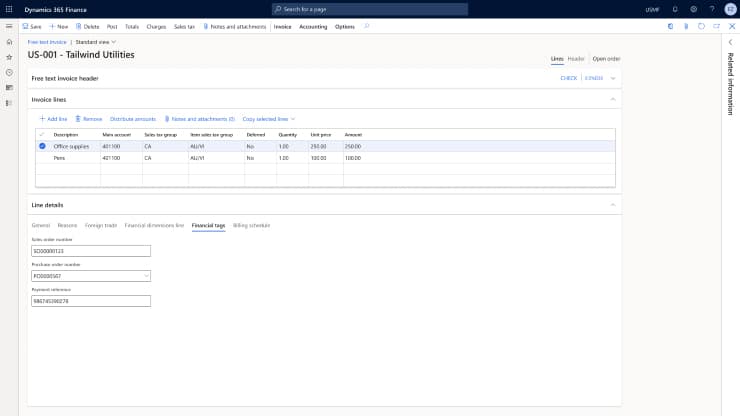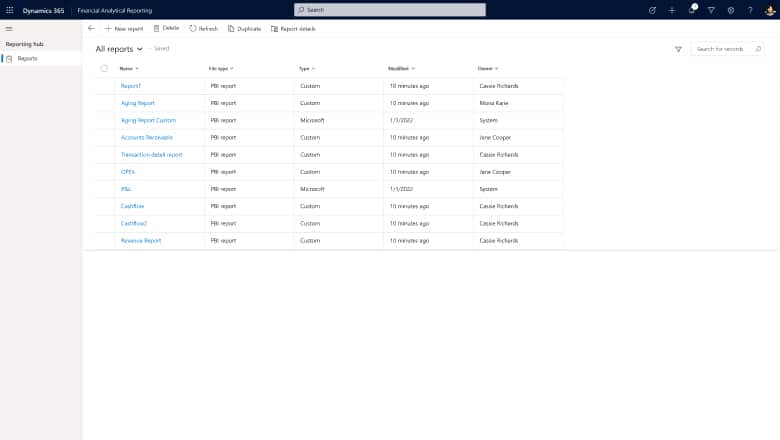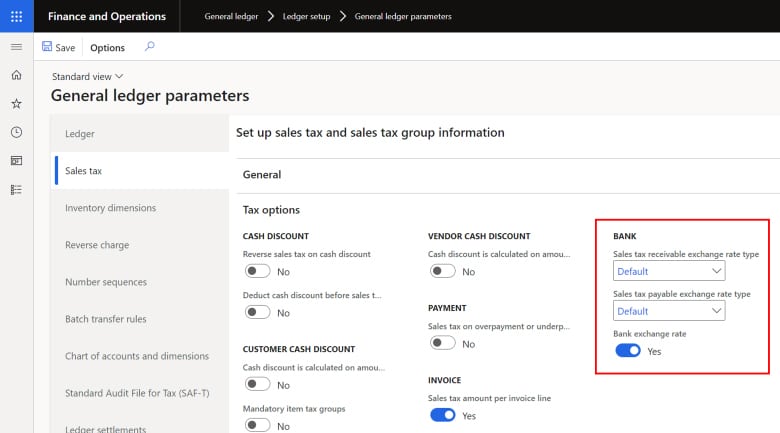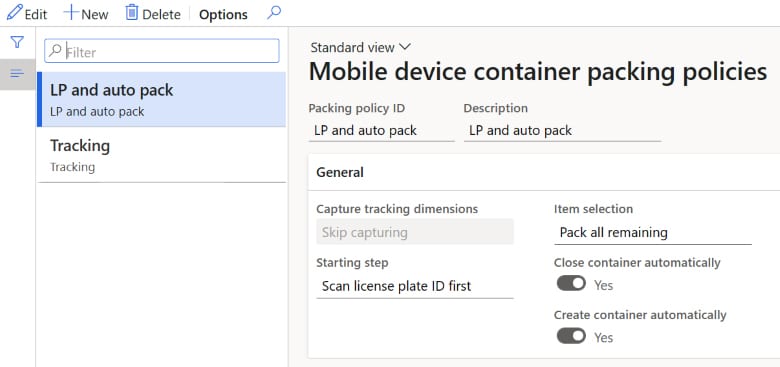Key updates in the 2023 release wave 1 of Dynamics 365 Finance & Supply Chain Management

Microsoft Dynamics 365 Finance and Operations applications, comprised of Finance and Supply Chain Management, are powerful cloud-based enterprise resource planning (ERP) systems. Dynamics 365 Finance is a powerful financial management software that helps organizations manage global operations and simplify and automate financial processes while Dynamics 365 Supply Chain Management is an impressive tool to connect your operations, improve production performance, modernize your warehouse, and optimize asset management. Microsoft releases updates to these applications twice a year. Below is a summary of the important updates and new features from the 2023 release wave 1.
Dynamics 365 Finance
Invoice automation
Invoice capture was released to public preview for PO invoices in the 2022 release wave 1. In the 2023 release wave 1 of Dynamics 365 Finance, Microsoft enhances the feature with additional capabilities for non-PO invoices and vendor invoice journals to give users a full accounts payables automation solution. Additionally, with the new vendor invoice automation capability, Dynamics 365 Finance will automatically process vendor invoices when they are imported. This eliminates the need for additional background processing and frees accounts payables staff to focus their efforts on exceptions. In this release, the following enhancements were made:
- Support invoice journal – There are now two categories of invoices, pending vendor invoice and invoice journal. Invoice journal support will be added in this release.
- Support custom AI model – Users will be able to define custom models to handle complex invoice formats.
- Continuous AI model training – In the application layer, users will be able to check and fix incorrect invoice data. The corrected data will be sent to the AI Builder for training purposes so the accuracy of recognition can be improved.
Financial tags
In the 2023 release wave 1 of Dynamics 365 Finance, Microsoft will introduce financial tags. Financial tags are an alternative to financial dimensions that users can use to track user-defined fields on accounting entries posted to the general ledger. Users will be able to define up to 20 financial tags which will be stored on accounting entries and posted to the general ledger. Financial tag values are displayed on inquiries, such as voucher transactions, and can be used for reporting and analytics. In this release, finance users will be able to create financial tags and incorporate them in the general journal and global general journal. Microsoft plans to incorporate financial tags into more transactions and processes with each subsequent release.
In this release, financial tags will be available for:
- Ledger settlement – Financial tags will be available to be used for matching within ledger settlement. These tags can be used to track subledger data such as a PO number, SO number, invoice number, or master data. Using these financial tags will enhance matching criteria and automation resulting in less time for manual matching within ledger settlement.
- Financial journals – In this release, financial tags will be available for the financial journals used most often, such as the customer payment journal and vendor payment journals. In the next release, Microsoft will expand this feature to the vendor invoice journal, allocation journal, periodic journal, fixed asset journal, asset leasing journal, and more.
Business performance analytics
In the 2023 release wave 1 of Dynamics 365 Finance, Microsoft implemented enhancements to business performance analytics. Financial and non-financial data and metadata will be brought into the Dataverse and transformed into analytical tables. This allows users to build well-defined and readily available relationships between ledger, subledger, and source documents from multiple systems. Users will be able to leverage a data model that is created by business processes and visible in Excel and Power BI to easily create and edit reports without support from developers.
Additionally, users will have access to the reporting hub. The reporting hub is a central repository for preconfigured reports that will be organized by business process. This hub makes it easy for inexperienced users to locate relevant reports that can be edited, shared, and grouped by function. Row and role-level security capabilities ensure the data model is available to the users in your organization that need access to this feature and reports.
Globalization studio
The globalization studio for Dynamics 365 Finance makes localization easy for users to create, extend, automate, and maintain. In the 2023 release wave 1, Microsoft continues to enhance the Globalization Studio to provide for more globalization breadth, depth, and scalability out of the box.
- Simplify integration with tax solution ISVs – In this release, Microsoft provides one generic tax calculation API to ISV tax solution providers to simplify the complexity of integrating D365 Finance to their solutions.
- Enable additional exchange rate types for tax currency conversions – Currently, D365 Finance only allows for the tax amount calculation that is based on the transaction currency. In this release, Microsoft provides additional tax-specific exchange rate types and converts a transaction currency amount into the tax currency amount directly.
- Withhold tax calculation during invoice – With this feature, a new withholding tax button can be used to temporarily withhold tax transactions. The withholding tax amount is estimated on the purchase order and the vendor invoice so that the user can validate the withholding tax setup prior to payment.
Dynamics 365 Supply Chain Management
Archive historical data
Over the years, companies generate and store a large volume of inventory transaction records, sales orders, and sales order lines. These types of records typically aren’t required for day-to-day operations but are still needed for historical reporting, auditing, and machine learning. However, storing a large volume of historical sales orders and inventory transaction records in your working environment can increase storage costs and negatively impact system performance and usability. In the 2023 release wave 1 of Dynamics 365 Supply Chain Management, Microsoft released a new feature that enables users to leverage the archival framework to perform rule-based archiving of historical sales orders, sales lines, and inventory transaction records. These records are removed from the working environment and stored in the Dataverse-managed data lake to improve system performance and lower operating costs.
Dynamics 365 Sales integration enhancements
In the 2023 release wave 1, Microsoft introduces several improvements to the prospect-to-cash scenario which is enabled through dual-write integration between D365 Supply Chain Management and D365 Sales. Previously, this integration was only able to allow sales quotations and sales orders to be created in isolation rather than as an end-to-end process flow. Additionally, important pricing features such as manual discounts were not fully supported. To address these issues, Microsoft added support for the following capabilities:
- Support sales quotation revisioning and state transitions to ensure sales quotation processing flows seamlessly between systems
- Sales quotation and sales order line pricing are more transparent and solid
- Support the crediting process to cover sales credit notes with respect to negative charges and discounts
Inventory visibility add-in additions
Microsoft continues to invest in enhancing the Inventory Visibility add-in in the 2023 release wave 1 of Dynamics 365 Supply Chain Management. Included in this release are the following capabilities:
- Make soft reservations from sales orders – This feature empowers users to create soft reservations directly from sales orders in D365 Supply Chain Management to prevent double-booking or overselling. These soft reservations can be triggered instantly or via a batch job.
- Calculate available-to-promise for up to three months – The maximum time fence for the available-to-promise feature has been extended from seven days to a full three months, significantly increasing visibility into future inventory statuses and order-promising capacity.
- Better configuration experience for users – The user experience has been expanded to support both basic configuration and many new functional operations. Users can now view and update inventory information directing in the user interface, adding convenience and improving the efficiency of stock inquiries.
- Near-real time inventory insights – A new dashboard will be available for users to view inventory quantity and status across data sources, legal entities, locations, and channels, with a quick, wholistic overview. For example, logistics manager can leverage the dashboard to investigate worrisome KPIs and take action quicker.
Manufacturing and asset management
Manufacturing and asset management features help organizations unlock agility, efficiency, and visibility into their manufacturing and maintenance operations. In the 2023 release wave 1 of Dynamics 365 Supply Chain Management, Microsoft will release updates designed to support these operations.
- New mobile experience for maintenance workers – The Asset Management add-in now provides workers with a mobile app designed to assist workers doing maintenance on machines and equipment. This app enables users to manage work orders and create maintenance requests from their mobile devices.
- Check material availability for scheduled operations – This feature makes it possible for organizations that use the scheduling type “Schedule operations” to check for material availability. Previously, it was only possible to check for material availability when using the “Schedule jobs” scheduling type.
Planning Optimization for master planning
Planning Optimization is a planning service that many manufacturers use, instead of the deprecated planning engine, for master planning. In the 2023 release wave 1, Planning Optimization will support many additional manufacturing planning features that were previously only supported by the older, deprecated planning engine. The following manufacturing capabilities will now be supported by the service:
- Bill of material (BOM) lines with multiples or rounding factors
- BOM lines with negative quantities
- Scheduling with explosion of production orders
- Release production orders with a scheduled start date earlier than today
Warehouse management
This release wave of Dynamics 365 Supply Chain Management provides warehouse management with enhancements that simplify warehouse implementation and configuration experiences and provides insights into performance and usage.
- Internal movements in warehouse – A new tiered approach to handling batch and serial tracked items improves the ability of the warehouse management system to track internal movements. This improves performance and enables warehouse workers to be fast and effective when processing any warehouse movement task for all types of items, including those that are tracked by batch or serial number.
- Pack shipments with speed and resilience – The Warehouse Management mobile app now enables workers on the warehouse floor to pack and close the last container in a shipment without waiting for the back-end system to process a sales packing slip, which makes the packing process faster and more resilient.
- Optimized mobile device screen layout – The Warehouse Management mobile app provides optimized screen layouts that make better use of product images to guide picking activities and increase worker efficiency.
- Warehouse management implementation and maintenance – New capabilities of Dynamics 365 Supply Chain Management help warehouse managers to set up, monitor, troubleshoot, and maintain their warehouse management system.
- Warehouse management processes – New optimization tools enable warehouse managers to manage and improve their warehouse management system. With these tools, warehouse managers can monitor and evaluate warehouse quality, efficiency, and productivity.
Next steps
Rand Group is your Dynamics 365 Finance & Operations support partner to highlight new Dynamics 365 Finance and Dynamics 365 Supply Chain Management features that your organization could utilize, train your users on the new features, and perform system checks to ensure all modules are performing as planned after each release wave. Ready to start using these new features from the Dynamics 365 Finance & Supply Chain Management 2023 release wave 1? Contact Rand Group today to schedule a consultation.











